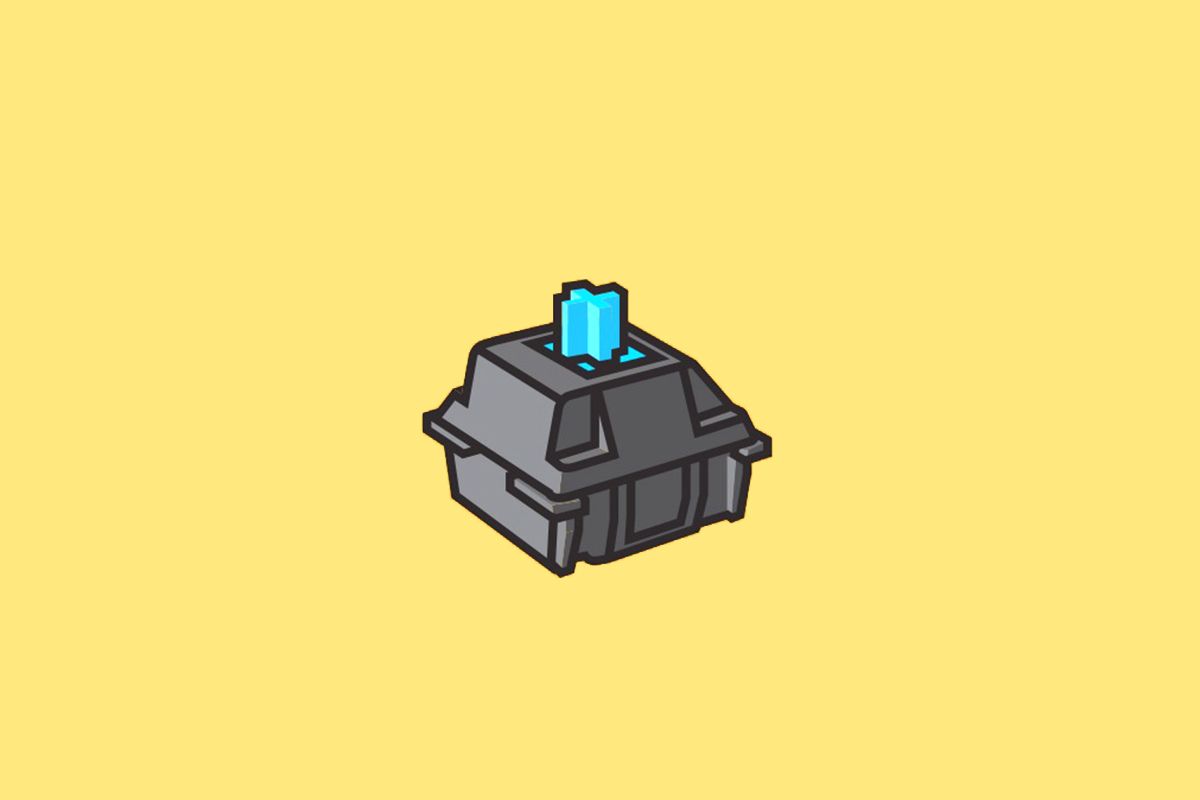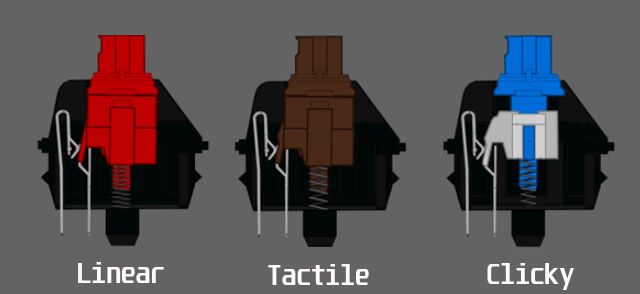Mechanical keyboards are all the rage. They come in all sorts of shapes and sizes, wired or wireless, and of course, with and without fancy RGB lighting. But the most important factor to consider while buying a mechanical keyboard has to be the key switch. Choosing the right key switch can make a huge difference as opposed to a membrane-based keyboard. They are more reliable and offer a more personalized experience by offering varied feedback and travel time depending on which one you choose. Mechanical keyboard switches also tend to have a much better shelf life lasting millions of keystrokes.
What is a Mechanical Keyboard Switch?
A switch within the context of a keyboard is the mechanism underneath the keys. On a mechanical keyboard, each key has its own complete switch mechanism, comprising of a housing, a spring, a stem, and some other parts like click bars. Variations can be made on several of these components, giving rise to a plethora of options on the actual switch with different properties like the amount of pressure needed to actuate and to bottom out, the sound made, the travel distance, and more.
Practically all mechanical keyboards allow for the keycaps to be removed. And quite a lot of keyboards also allow for switching around for the switch mechanisms. If this swapping option is not available to the user, there's usually an option to choose the keyboard switch type at the time of purchase. This makes it quite imperative to know and understand the different types of mechanical switches present, in order to make the correct choice that suits your needs.
Types of Key Switches
Mechanical keyboard switches are broadly available in three categories. Depending on their characteristics, they are either linear, tactile, or clicky.
Linear switches usually feel smooth and offer a consistent actuation without any tactile feedback. The actuation or the registering of a keypress happens when it bottoms out, and since there are no bumps in between, linear switches glide down rather easily. Many gamers prefer investing in keyboards with linear switches, with the most common one being Cherry MX Red.
Tactile switches have a similar construction as linear but include a bump halfway through the key’s downward travel. This bump signifies the actuation point, which means that a keypress is registered before it fully bottoms out. This enables a faster typing experience since the key doesn’t have to travel all the way down to actuate, thus becoming the preferred choice of typists. Cherry MX Brown switches are one of the most popular among the variety of tactile keyboard switches available in the market.
Clicky switches follow the same concept as tactile switches, which means they're bumpy, but at the same time, they are louder by design. These key switches offer a bump along with additional audio feedback, which is pretty satisfying, almost like an old typewriter. However, this can be annoying for people around you, especially in an office environment. If you like having a nice clicky keyboard, you could look at Cherry MX Blue switches.
Which Key Switch should I get?
Based on the above characteristics, you'll find various types of switches offered by several manufacturers. Cherry MX is the most popular and widely accepted key switch and was also one of the first to classify them by color. Primarily, you need to know that Red or Black switches are linear, Brown or Clear switches are tactile, while Blue or Green switches are clicky. Depending on the keyboard OEM, these can differ but most of them are aligned with Cherry's color-coding. We will be discussing them in detail in a future post.
Most users recommend linear-type switches for gaming as they offer a consistent keystroke adding precision to every keypress. Typists usually prefer tactile or clicky switches as these allow for a faster keystroke experience. To be clear, there are no hard and fast rules when it comes to key switches. Depending on your personal preference, you can choose between either of the three options. Personally, I’ve used linear type switches for a while now, and in my opinion, they work great for typing and gaming. Having said that, there are certain factors that you should consider while investing in a mechanical keyboard.
First and foremost, you need to make sure that the key switches last a long time. You don't want to spend a lot of money on a keyboard that doesn’t have a solid shelf life. Usually, mechanical switches have a lifespan ranging up to 50-80 million keystrokes, with Cherry MX switches offering a guarantee of 100 million keystrokes. Avoid buying a keyboard with cheap or unknown mechanical switches at all costs.
Make sure you get the right switch with the right set of keycaps. Certain keyboard manufacturers offer low-profile keycaps to reduce the overall weight. These should work well for users who have smaller hands or don't type with heavy force. Speaking of which, ensure that you invest in a keyboard that offers the right amount of spring force as well as travel distance. A strong spring force can tend to put a strain on your fingers. Similarly, opting for a keyboard that offers a short key travel distance means that you don't have to mash every key.
If you are in the process of buying a new keyboard, make sure you check out our list of the best mechanical keyboards to buy in 2021.


